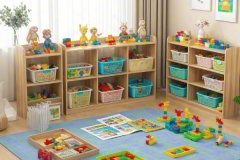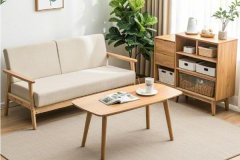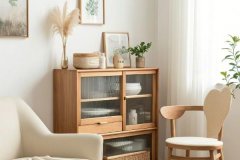Easy home organization tips for busy families
Easy Home Organization Tips for Busy Families
In today’s fast-paced world, organizing the home can feel like a never-ending task, especially for busy families juggling work, school, activities, and household responsibilities. However, a well-organized home can reduce stress, save time, and create a more peaceful environment. Fortunately, organizing doesn't have to be complicated or time-consuming. With a few simple tips and tricks, busy families can maintain a clutter-free, efficient, and functional home. Here are some easy home organization ideas that can work for every family:

1. Create a Family Command Center
A family command center is a centralized spot in the home where everyone can access essential information, manage schedules, and stay organized. This can be especially helpful for busy families to keep track of appointments, school events, and household tasks.
How to Set It Up:
- Location: Choose a spot in the home that is easily accessible for everyone, such as near the kitchen or in a hallway. Ideally, this space should have a bulletin board, calendar, or wall-mounted organizer.
- Essential Items: Include a calendar, a to-do list, important phone numbers, and a place for incoming and outgoing mail. If your family uses digital tools, you can add a tablet or charging station for quick access.
- Family Involvement: Encourage all family members to contribute by adding their activities, appointments, or reminders to the calendar. This keeps everyone on the same page and reduces scheduling conflicts.
Why This Helps:
A family command center streamlines communication, ensuring everyone knows what’s happening in the family. It also reduces the mental load on parents, helping to prevent missed appointments or forgotten tasks.
2. Use Bins and Baskets for Quick Cleanups
One of the simplest ways to maintain an organized home is by using bins, baskets, or storage boxes. These are perfect for quickly gathering toys, shoes, or miscellaneous items that tend to pile up during busy days.
How to Implement This:
- Strategic Placement: Place bins or baskets in high-traffic areas such as entryways, living rooms, or children’s bedrooms. For example, a toy bin in the living room or a basket for shoes near the door can help reduce clutter in seconds.
- Labeling: Use labels to make it easy for everyone to know where items belong. This encourages kids (and adults!) to put things away properly.
- Variety of Sizes: Use different sizes of bins to accommodate various items, such as larger bins for blankets or smaller baskets for books or toys.
Why This Helps:
Bins and baskets provide a quick, efficient way to tidy up any area in minutes. They also encourage everyone in the family to participate in keeping the home organized, without needing to spend long hours cleaning.
3. Build Daily Family Routines
In busy households, it can be hard to stay on top of organization without a routine. Establishing daily habits can help prevent clutter from accumulating in the first place and keep the house functioning smoothly.
How to Create Daily Routines:
- Morning Routine: Encourage each family member to make their bed, get dressed, and tidy up their personal space before heading out for the day.
- Evening Cleanup: Dedicate 10-15 minutes at the end of each day to a family cleanup session. This can include wiping down surfaces, putting away items left out during the day, and doing a quick sweep of the house.
- Set Designated Chores: Assign specific daily chores for each family member, whether it’s washing dishes, folding laundry, or vacuuming. Rotate chores if needed to ensure fairness and prevent burnout.
Why This Helps:
Establishing daily routines promotes consistency and accountability. Small tasks done regularly prevent the build-up of clutter, and family members develop a sense of responsibility for maintaining the home.
4. Maximize Vertical Space
In busy homes, floor space is often limited, but you can easily maximize vertical space to create more storage without sacrificing room for play or movement.
How to Use Vertical Space:
- Wall-mounted Shelves: Install shelves on walls to store books, decorative items, or office supplies. This works especially well in bedrooms or common areas where floor space is at a premium.
- Over-the-Door Organizers: Use the back of doors for hanging storage like shoe racks, hooks for bags or jackets, or even baskets for small items like scarves or cleaning supplies.
- Hooks and Pegboards: Use hooks or pegboards in areas like the kitchen, hallway, or garage to hang bags, keys, hats, or cleaning tools.
Why This Helps:
Vertical storage helps declutter the floor and creates more usable space, which is essential for busy families. It’s also a great way to store items that are used frequently and need easy access.
5. Establish a Toy Rotation System
If your kids have too many toys, it can be difficult to keep their play area organized. A toy rotation system can help manage the clutter and keep kids engaged with a smaller selection of toys at a time.
How to Implement Toy Rotation:
- Divide Toys Into Bins: Sort toys by categories (e.g., dolls, action figures, building blocks) and store them in separate bins or containers.
- Set a Schedule: Keep a selection of toys accessible while storing the rest out of sight. Every few weeks, rotate the toys so your kids always have something “new” to play with. This also prevents toys from piling up and getting lost in the mess.
- Involve the Kids: Get your children involved in the process by letting them help choose which toys to keep out and which to store away.
Why This Helps:
A toy rotation system reduces the overwhelming amount of toys on the floor, making cleanup easier. It also keeps kids more focused and interested in their toys, preventing them from getting bored and scattered across multiple play areas.
6. Simplify Paperwork and Important Documents
Paper clutter is a major source of disorganization for many families. Bills, school papers, medical forms, and other documents can pile up quickly if not managed properly.
How to Organize Paperwork:
- Create a Paper System: Use file folders or a filing cabinet to organize important documents. Label folders by category (e.g., bills, school papers, health records) to make finding things easier.
- Go Digital: Whenever possible, switch to digital records and opt for paperless billing or documents. Use apps or cloud storage to keep important documents accessible from your phone or computer.
- Designate a Mail Station: Set up a specific spot where incoming mail can be sorted immediately. Encourage all family members to deal with mail quickly to prevent it from piling up.
Why This Helps:
By creating a simple system for paperwork and important documents, you can avoid clutter and ensure you never lose track of important deadlines or information. A designated mail station makes sorting paper a quick and simple task.
7. Declutter Regularly
One of the most effective ways to stay organized is to declutter regularly. Clutter often accumulates in busy homes, but taking the time to purge unnecessary items can make a huge difference in maintaining an organized space.
How to Declutter:
- Schedule Decluttering Sessions: Dedicate time every month or season to go through areas like closets, toys, kitchen drawers, or the garage. Remove items that are no longer needed, worn out, or no longer serve a purpose.
- Use the “One In, One Out” Rule: For every new item brought into the house, encourage family members to donate or discard something old. This helps prevent accumulation and keeps possessions manageable.
- Involve the Family: Make decluttering a family activity. It’s easier and faster to sort through items when everyone is involved, and it can help children learn the importance of maintaining an organized space.
Why This Helps:
Regular decluttering prevents clutter from building up and becoming overwhelming. By keeping only the items that are truly useful or meaningful, you make it easier to stay organized and create a more peaceful living environment.
Final Thoughts
Keeping a home organized when juggling a busy family life may seem overwhelming, but it doesn’t have to be. By implementing these simple and practical tips—such as setting up a family command center, using storage bins, creating routines, and decluttering regularly—you can create a more organized and functional home without adding stress. The key is consistency and making small, manageable changes that become part of your family’s everyday routine. With a little effort and planning, you’ll create an environment that’s both tidy and peaceful for everyone.
Home Organization Tips for a More Functional and Peaceful Space
Organizing your home might seem like a daunting task, but with the right strategies and mindset, it can become a manageable and even enjoyable process. Whether you're dealing with a small apartment or a large house, creating a more organized space can reduce stress, increase productivity, and make your home feel more peaceful. Here are some high-quality home organization tips to help you achieve a more functional and clutter-free environment.
1. Start with a Plan
Before diving into organizing, take a moment to assess the areas that need attention and create a plan. Identify spaces that are most frequently used, like the kitchen, living room, or entryway, and tackle them first.
How to Plan:
- Make a List: Write down specific areas that need organizing, such as closets, pantries, or bathrooms.
- Set Goals: Decide on achievable goals for each space (e.g., clearing off the kitchen counter, organizing the closet by color or function).
- Prioritize: Focus on one room or area at a time to avoid feeling overwhelmed.
Why This Helps:
Having a clear plan helps break down the overwhelming task of organizing into smaller, more manageable steps. It also allows you to approach the process with a purpose and direction.
2. Use Vertical Storage
If floor space is limited, vertical storage is a game-changer. Utilizing walls and other vertical spaces can free up room while still providing plenty of storage.
How to Implement Vertical Storage:
- Wall-mounted Shelves: Install shelves above counters, desks, or cabinets to store books, office supplies, or decorative items.
- Hooks and Pegboards: Use hooks or a pegboard to hang bags, jackets, keys, or even kitchen utensils.
- Over-the-door Organizers: Hang storage racks on the backs of doors for shoes, cleaning supplies, or accessories.
Why This Helps:
Vertical storage maximizes the space available, reduces clutter on the floor, and keeps items within easy reach. It’s especially useful in smaller homes or apartments where every inch counts.
3. Declutter Regularly
Clutter accumulates over time, and the more often you declutter, the easier it becomes to keep things organized. Make it a habit to go through your belongings every few months and get rid of things you no longer need or use.
How to Declutter:
- Set a Decluttering Schedule: Dedicate a weekend or a few hours each month to decluttering specific areas like closets, the kitchen, or storage spaces.
- Use the Four-Box Method: When decluttering, create four boxes: Keep, Donate, Sell, and Trash. This helps you make decisions about each item and prevents unnecessary accumulation.
- Adopt a “One In, One Out” Rule: For every new item brought into the house, get rid of one item. This helps prevent clutter from building up over time.
Why This Helps:
Decluttering reduces excess items and creates more space. It also promotes a more mindful approach to possessions, helping you focus on what’s truly necessary or meaningful in your home.
4. Maximize Hidden Storage Spaces
In many homes, hidden spaces—such as under the bed, behind doors, or in attic or basement areas—often go unused. These spaces can be perfect for storing items you don’t use daily but still need to keep.
How to Maximize Hidden Storage:
- Under-Bed Storage: Use storage bins, rolling drawers, or even boxes under the bed to store seasonal clothing, extra bedding, or shoes.
- Overhead Storage: Install overhead cabinets or shelves in garages, basements, or closets for bulky or infrequently used items.
- Furniture with Built-In Storage: Opt for furniture that doubles as storage, like ottomans with hidden compartments, storage benches, or coffee tables with drawers.
Why This Helps:
Hidden storage allows you to keep items out of sight while maximizing the space in your home. It’s an easy way to store seasonal or seldom-used items without sacrificing accessibility.
5. Implement a Daily Cleaning Routine
Staying organized doesn’t mean you have to spend hours cleaning. Establishing a simple daily routine can help maintain an organized home with minimal effort.
How to Create a Daily Routine:
- Morning Routine: Start each day by making the bed, wiping down countertops, and putting away any stray items.
- Evening Tidy-Up: Spend 10-15 minutes in the evening tidying up common areas. Encourage family members to pitch in by setting aside time for everyone to clean up together.
- Daily Chores: Assign small daily tasks like doing dishes, taking out the trash, or wiping down surfaces. Rotate these tasks to keep things fair.
Why This Helps:
Daily cleaning routines prevent clutter from building up and ensure that your home stays organized on a regular basis. Even a few minutes a day can make a significant difference in how tidy your space feels.
6. Use Clear Storage Bins and Labels
When organizing your belongings, it’s essential to store items in a way that’s easy to access and clearly labeled. Clear bins help you identify items at a glance without needing to open each container.
How to Use Clear Storage Bins:
- Organize by Category: Store similar items together, such as holiday decorations, office supplies, or seasonal clothing. Label each bin for quick identification.
- Label Everything: Use easy-to-read labels or color-coded tags to indicate what’s inside each bin or container. This makes it easier for everyone in the household to know where things belong.
- Stack and Store: Stack bins neatly on shelves or in closets to make the most of available space.
Why This Helps:
Clear storage bins and labels make it easy to find and put away items, eliminating the need to search through multiple boxes. They also help keep spaces organized and reduce the chances of items getting misplaced.
7. Adopt the “Less is More” Mindset
One of the most effective ways to stay organized is to minimize the number of items you have in your home. By adopting a “less is more” mindset, you can focus on quality over quantity and reduce clutter.
How to Practice Minimalism:
- Evaluate Your Needs: Assess each area of your home and determine what items you actually use or need. Consider donating or selling items that don’t serve a purpose.
- Buy Thoughtfully: When purchasing new items, choose ones that are functional and versatile. Avoid impulse buys that add unnecessary clutter to your space.
- Focus on Quality: Invest in high-quality, long-lasting items that will serve you for years rather than accumulating cheap, disposable things.
Why This Helps:
Living with fewer possessions means less to clean, organize, and maintain. It creates a simpler, more peaceful environment and helps you focus on the things that truly matter.
8. Organize Paperwork Efficiently
Paper clutter is one of the most common forms of mess in homes. Bills, receipts, school forms, and junk mail can pile up quickly. By organizing your paperwork efficiently, you’ll keep your home from being overtaken by paper.
How to Organize Paperwork:
- Create Filing Systems: Use file folders or binders to organize documents by category, such as bills, taxes, medical records, or school papers. Keep your filing system simple and easy to use.
- Go Digital: Whenever possible, opt for digital receipts, bills, and documents. Scan important papers and store them securely on your computer or in cloud storage.
- Shred Unnecessary Paper: Regularly go through your paperwork and shred old documents you no longer need.
Why This Helps:
A well-organized paper system ensures that important documents are easy to find and reduces the chances of losing essential paperwork. Going digital minimizes clutter and reduces your reliance on paper.
Final Thoughts
By implementing these easy and effective home organization tips, you can create a more functional, organized, and peaceful living environment for you and your family. The key is consistency—making small changes each day and staying committed to maintaining an organized space. Whether you’re maximizing vertical storage, decluttering regularly, or establishing a daily cleaning routine, these simple steps can lead to a home that feels more organized, efficient, and stress-free.









